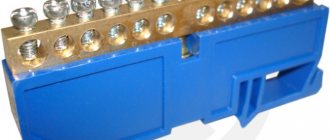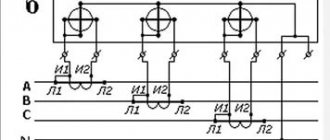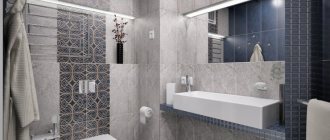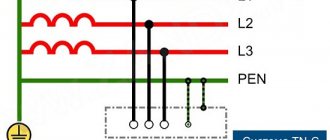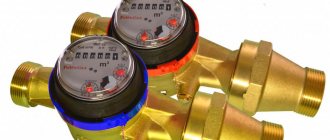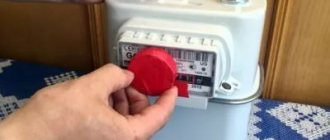Why do you need an electric meter?
Electricity is not a free resource that every person needs in the modern world. Electricity consumption is strictly controlled by management companies. In case of prolonged non-payment, office representatives have the right to disconnect subscribers from the general network. Control is carried out using special devices.
The equipment is installed in every apartment, house, institution and production facilities. Due to significantly different energy consumption and differences in the design of engineering systems, manufacturers offer several types of electricity meters. This becomes the reason for the actualization of an important issue for the consumer: how to choose the right electric meter.
What types of electricity meters are there?
When trying to understand the range of electricity metering devices, you first need to understand which meters can be installed at a particular facility. After all, a dacha, an apartment or, for example, a car workshop are characterized by different consumption and required power. To decide on the best option, let’s take a look at the main types.
Variety of electricity metering devices Source homesantehnica.ru
Mechanical or induction
The operating principle is based on the influence of current and voltage coils on an aluminum disk located between them. The rotation of the latter sets in motion rollers with a numerical identifier of electricity consumption. In single-phase models, transmission is carried out by one disk, in three-phase models - by two on a single rod. The latter are also located between the coils, only here there are three pairs.
The technical design of the mechanism determines the relatively large dimensions of the devices. The second drawback is that it is impossible to take into account readings using a multi-tariff system and automatically collect data. The third disadvantage is the low accuracy class, and the error increases with a small load. The last one is the own energy consumption for rotating the disk and drum. But the choice of such equipment is justified by its low cost, reliability and long service life (more than 15 years).
Single-phase induction device without protective cap Source twimg.com
Electronic
Here the operating principle is based on the transmission of pulses from alternating current and voltage to solid-state elements. Information about their quantity is recorded in electronic memory. The equipment within the group differs according to the type of measuring elements:
- information comes to the monitor from the converter through two transformers: current and voltage;
- the result is visible after a series of actions inside the device: current and voltage sensors transmit weak signals, which are amplified, converted, multiplied and filtered.
When considering the difference that is relevant for homeowners, two points can be highlighted. Transformer meters provide more accurate results. And with sensors, manufacturers can produce equipment for alternating and direct current, which allows them to expand their range of functionality.
Design of electronic equipment for metering electricity consumption Source yandex.net
Hybrid induction and smart
The hybrid type of electric meters combines induction and electronic type devices. Externally, the devices can be distinguished as follows: there is either a disk with an electronic display, or a drum without a disk (without electronic memory either). The advantages and disadvantages of the equipment are identical to analogues. They can be identified by the type of measuring element: disk or sensors/transformers.
An innovative type of meter for home and garden – a “smart” device for metering electricity consumption. In Russia, installation was officially permitted on July 1, 2020. Here you can control energy consumption and change tariffs. Remote capabilities: taking readings, monitoring the network condition for voltage and surges, communicating with the management company dispatcher. The transfer of current data is automated using the commercial accounting system. In addition, it is possible to detect unauthorized connections and block violators and defaulters without the participation of the smart home owner. It is impossible to deceive such an electric meter with a built-in computer.
Sample of a smart electricity meter Source newtimes.kz
Is there any benefit from multi-tariff electricity meters?
Along with regular increases in electricity tariffs, the relevance of the problem of energy saving is growing. As one of the ways to save electrical energy, today we are offered the installation of a multi-tariff electric meter. Will this device really help you save money? Let's try to figure it out.
What does "multi-tariff" mean?
It is no secret that electricity in residential buildings is consumed unevenly throughout the day. It's simple: at night consumption is minimal, as everyone is sleeping, and in the morning it increases - people are getting ready for work. In the evening, kW consumption jumps again - everyone returns from work, turns on the stove, washing machine, dishwasher, light, TV... Such changes cause inconvenience for power engineers - they are forced to have a power reserve that allows them to withstand peak voltage.
To relieve the network and avoid such sudden surges, as well as to save on electricity, we are offered to install multi-tariff energy consumption meters. There are “two-phase” and “three-phase”. Two-phase ones divide the day into “day” (from 7:00 to 23:00) and “night” (from 23:00 to 7:00), and three-phase ones into three zones: night zone (from 23:00 to 7:00) , half-peak (from 10:00 to 17:00 and from 21:00 to 23:00) and peak zone (from 7:00 to 10:00 and from 17:00 to 21:00). The cost of electricity spent at different times will also be different.
Multi-tority accounting, it would seem, should really help us save. By not loading the electrical network during peak hours and using some electrical appliances at night, we get the opportunity to pay for electricity at a cheaper rate. Everything would be elementary if the night tariff was simply cheaper than usual (according to a single-tariff meter). But everything is a little trickier. A daily kilowatt costs more than a kilowatt according to a regular single-rate meter. But night kW is much cheaper than single-rate kW.
Will a multi-tariff meter help you save money?
Here are the specific numbers provided on the Tomskenergosbyt website:
Prices (tariffs) for electrical energy for the population for 2014.
*With the exception of those living in urban settlements in houses equipped in the prescribed manner with stationary electric stoves and (or) electric heating installations, and with the exception of those living in rural settlements.
| Prices (tariffs) for electrical energy for the population for 2014. (With the exception of those living in urban settlements in houses equipped in the prescribed manner with stationary electric stoves and (or) electric heating installations, and with the exception of those living in rural settlements) | ||
| Rate | 01.01.2014-30.06.2014 | 01.07.2014-31.12.2014 |
| One-part tariff | 2.60 rub./kWh. | 2.70 rub./kWh. |
| One-rate tariff differentiated by two zones of the day | Daytime: 2.70 rub./kWh. Night: 1.85 rub./kWh. | Daytime: 2.81 rub./kWh. Night: 2.01 rub./kWh. |
| One-rate tariff differentiated by three zones of the day | Peak: RUB 3.23/kWh. Half-peak: RUB 2.60/kWh. Night: 1.85 rub./kWh. | Peak: RUB 3.35/kWh. Half-peak: RUB 2.70/kWh Night: 2.01 rub./kWh. |
For other categories the numbers are different; more details can be found on the Tomskenergosbyt website
First, let's look at a two-tariff meter. It turns out that with two-tariff metering for one daily kWh we overpay 10 kopecks compared to the single-rate tariff. But for one night kWh we save 75 kopecks.
With a three-tariff meter during the day (half-peak zone) we pay as we paid, in the morning and evening (peak zone) we overpay 63 kopecks, and at night we save 75 kopecks on each kilowatt.
What about the payback?
Is it worth it? Let's assume that the average apartment consumes 300 kWh per month. Let's also assume that we managed to use up a third of them at night. Only one average refrigerator consumes 170 watt hour (40 kW per month during “night” operating hours). And if you add other large household appliances to it, for example, a washing machine and a boiler... It’s quite possible to gain 100 kW.
We calculate: 300*2.60 - (200*2.70+100*1.85) = 55 rubles saved per month, 660 rubles per year. The cost of the meter and its installation is approximately 1,500 rubles. Thus, its payback period will be just over two years. Whether to change the meter to a multi-tariff one or not is something everyone decides for themselves. For different families, the payback period will be different - after all, everyone’s energy costs are also different.
Is this counter exactly what you need?
To find out, you need to analyze your personal energy consumption. The best thing is to create your own energy profile. It will be completely different for “owls” and “larks”.
If you want to install a two-tariff meter, record the electric meter readings at 7:00 and at 23:00. For a three-rate tariff, this must be done at 7:00, 10:00, 17:00, 21:00 and 23:00. And so on for a month. After this, it will be possible to calculate consumption for all zones and find out the profitability of replacement.
Naturally, not many people will bother in this way, so we suggest you just speculate.
The average Russian, who is mostly absent from his apartment during the day and sleeps soundly at night, will probably not immediately notice the benefits of a multi-tariff meter. On the other hand, if your home has a lot of “smart” household appliances (washing machine, dishwasher, boiler and other powerful electrical appliances) with a “delayed start” function and you are ready to turn on these electrical appliances at night, the payback period will be noticeably reduced. If the house, in principle, has powerful appliances that operate around the clock or mainly at night (electric heating and air conditioning, night lighting of a large yard, water or sewer pumps), then the savings will be really noticeable.
Information: Tomsk Center for Resource Saving and Energy Efficiency
Video description
This video is about smart meters: what are they and should you be afraid of installing them:
See also: Catalog of companies that specialize in electrical work of any complexity
Electricians' note
It is worth noting the observations of specialists, which are based on the requirement to move meters in the private sector to the street. Based on Resolution No. 442, paragraph 138, the accuracy class should be at least second. Such a device can be used in conditions from -20 to +55 degrees Celsius with a humidity level of up to 80%. With other indicators, the error in the meter readings increases. Although the companies that control expenses claim that a coefficient has been introduced for calculating payments that takes this fact into account.
Installation of equipment on the street Source electro-znatok.ru
How to take readings from a two-tariff electricity meter
Meters with two tariffs display electricity data as accurately as possible. The information is displayed on the display. Moreover, not only the total amount of energy consumed is reflected, but also the amount of electricity used during a certain period of time, for example, day or night. Taking this into account, the apartment owner can draw up his own schedule for using powerful appliances in order to minimize the amount of money spent on utility bills.
Note! Metering devices with a differential tariff system inform the homeowner not only regarding the readings. They display the degree of load on the system, so you can rationalize the energy consumption process.
Some users will find the process of reading a multi-tariff meter difficult due to the presence of many numerical values on the display. However, the data processing system is actually very simple if you look at it.
The values of day and night tariffs are summed up
How to take readings from two-tariff electricity meters
To take readings from the electric meter, you will need a pen and a blank sheet of paper. The accounting device displays the letter “T” with digital markings 1, 2 or 3. The device has an “Enter” button for taking readings at different tariffs.
Reading diagram:
- Write down the daily rate data on a piece of paper (letter “T” marked 1).
- Get readings for the night tariff by pressing the “Enter” button.
- A “T” will appear on the screen labeled 2. Record these readings.
- Below, write down the data received for the past month.
- Based on past and new data obtained, calculate the number of kilowatts of electricity consumed for the current month. To do this, you need to subtract the readings for the last month from the latest data.
- Perform cost calculation. In this case, the number of kilowatts is multiplied by the cost of 1 kW for each tariff separately.
- Add the resulting amounts for the night and day rates.
Important! When taking readings to calculate the cost, you do not need to rewrite the numbers after the decimal point. They will complicate calculations and may cause an error that will result in an overpayment.
Different tariffs are marked T1, T2, T3, etc.
How to fill out a receipt for electricity payment correctly
Not every energy supply company tracks the documentation process, so very often consumers are forced to fill out receipts themselves.
Scheme for filling out receipts:
- Bank details are entered. These data are specified in the contract for the supply of electrical energy.
- The consumer data is filled in, i.e. payer. The list of this information includes the consumer's address, full name and personal account number.
- The period of time for which payment will be made (month) is recorded.
- The first line of the table is intended for entering data on the daily tariff “T1”, both for the last month and for the current one. The tariff rate and the amount to be paid are also indicated here.
- The second row of the table is filled in in a similar way with data for the night tariff “T2”.
- The “Total” column summarizes all data payable according to tariffs.
Most often, the list of required information is limited to the specified data. The receipt form must be approved by the energy supply company. In some cases, it is necessary to record the model of the metering device. At post offices where utility bills for electricity are paid, consumers can receive advice on how to correctly fill out receipts.
In addition, there is a hotline that you can call to resolve such issues. Many companies have resources on the Internet where users are provided with consulting support.
Filling out a receipt for paying for electricity
Helpful advice! In some cases, it is allowed to transmit information on the electricity meter via the Internet. However, such a system only works if data is transferred monthly to the energy supply company.
Transmitting readings from an electric meter: basic methods
To date, several convenient systems have been developed for transmitting data from electricity meters to the service company:
- Take the data to the service company, having first filled out a receipt. It is advisable to pay the invoice on the same day.
- Transfer data remotely via the Internet. To do this, you need to make a calculation, go to the company’s official website on the Internet, log in to the website and fill out the appropriate form.
- Owners of electric meters with remote readings can simply use the automatic data transfer function. By activating this device option, there is no need to perform calculations and transfer readings to the service company. All actions are automated.
Owners of apartments and houses must independently submit meter readings once a month
According to the updated legislation, owners of apartments in multi-storey residential buildings, as well as housing in the private sector, are not required to transfer data. All information from accounting devices can be sent in a way convenient for each consumer at the end of the month. If the owner of the meter has recently become a user of the services and does not have receipts confirming payment, it is allowed to transmit readings in an unauthorized way. This may include email, answering machine and SMS messages. If you use the SMS transmission method, you will definitely need a personal account number.
Taking this into account, we can come to the conclusion that two-tariff meters are beneficial in most cases. At the same time, the reading system is no more complicated than that of older generation devices.
How to choose an electricity meter
Choosing an electricity meter is an important undertaking, since the decision is made over several years. There are many criteria, as well as types of electricity meters. Let's look at what is relevant for homeowners.
Design
The two-tariff electronic electricity meter is compact and looks like a flat box. The induction mechanism is larger and is located on the panel. A protective translucent cap is provided here.
Phases
When deciding which electricity meter to choose regarding the phases, the voltage in the system is taken into account. You can determine it by the number of channels in the supply cable: 2 or 4. There are only 2 options: single-phase for 220-230 V, three-phase for 380-400 V. It is noteworthy that the latter can be used for any network.
Current strength
Which electric meter is better to choose for your home or cottage can be determined by the value of the maximum current strength. The reason is the different number of household appliances and energy consumption in general. So, for a garden plot 40 A will be enough, but for constant use it is better to consider a range from 50 to 100 units.
The current strength is indicated next to the voltage and frequency Source ks-mo.ru
Differentiation
Standard devices are focused on recording daily energy consumption readings. Two-tariff and three-tariff electricity meters have built-in memory and a timer. These introductions allow the flow rate to be differentiated depending on the hourly settings. As a rule, in the private sector two tariffs are established: daytime from 7 am and nightly after 23:00.
Accuracy class
This parameter indicates the maximum permissible error in the readings of a particular device. It is measured in %, often in favor of the subscriber, but it is almost impossible to determine on your own. For example, with a flow rate of 100 kW, it will be possible to take readings equal to 98-99.9 or 100.5-102 kW.
According to the standards, the accuracy class must be higher than 2 units. Previously, models with an accuracy of 2.5 were popular, but they have been discontinued. Among the reasons, 2 points stand out: high % error and lack of accounting in passive mode. For example, the indicator may show the activity of the equipment, but the power consumption of the turned on TV is not reflected.
Accuracy class of the Soviet induction meter 2.5 Source suspilne.media
If we take into account the probability of error in favor of management companies, then the optimal decision on which electricity meter is better is an accuracy of less than 2%. Installation of such equipment according to current regulations is possible only in two cases: if the old device fails or its service life has expired.
You can independently determine the accuracy class in two ways. On the front panel of the device, the parameter is indicated and circled. The manufacturer necessarily reflects the characteristics in the technical passport.
What is a two-tariff meter and what is it for?
To find out which meter is better, single-tariff or dual-tariff, it is necessary to identify the difference between these devices. Moreover, it is impossible to immediately determine the differences between the devices. Like two-tariff, single-tariff electricity meters are programmable electronic devices that take into account the amount of electricity consumed.
However, the former have one feature. Dual-mode meters can count the amount of electricity consumed during certain hours. That is, such devices take into account consumption during the day and at night. This means that upon reaching a specific hour (usually 7 and 23) the indicators automatically change.
Attention: the time intervals during which day and night rates are taken into account are set by regional authorities and vary depending on the subject of the country.
Devices of this type are connected to a special commercial electricity metering system (ASKUE). Thanks to this, users do not need to constantly transfer data to the energy supply company: the latter receives data on electricity consumption automatically.
Advantages and disadvantages
It is beneficial to install a two-tariff meter for both energy supply companies and end consumers. The first use of such devices allows you to:
- reduce the load on power plants by reducing the amount of energy consumption during the daytime and increasing it at night;
- increase the efficiency of electricity production by reducing the volume of fuel used for generation;
- reduce the cost of repairing equipment at power plants;
- reduce emissions into the atmosphere.
Important: installing an electronic meter forces consumers, in order to reduce utility costs, to carry out work that requires connection to the power grid at night, when the tariff is lower.
The advantages of a two-tariff electricity meter for end consumers include the fact that devices of this type can reduce the costs associated with servicing household appliances. This is explained by the fact that thanks to such devices, users, in order to reduce costs, more often connect vacuum cleaners, washing or dishwashers, and air conditioners at night.
The latter is considered the main disadvantage of dual-zone meters. Consumers are forced to shift housework to the dark. And this after a working day can become a tiring task. In addition, in a number of regions the difference between daytime and nighttime tariffs is almost invisible. Because of this, the payback period of a multi-tariff meter increases.
Which electricity meter is better to install in a private house?
Let's consider what is better to choose using the example of single-phase two-tariff meters Energomera or Mercury. These are well-known brands of devices that are in high demand.
| Parameter | Mercury 230 ART-03 RN 5(7.5) A | Energy meter CE 303 R33 746-JAZ 3ph 5-100 A |
| Accuracy class | 1/0,55 | 1/1 |
| Power | Active, reactive | |
| Load | 5-7.5 A | 5-100 A |
| Frequency | 49-51 Hz | 47.5-52.5 Hz |
| Operating principle | Electronic | |
| Indications | 4 tariffs | 2 tariffs |
| Tariff control | External, internal | External |
| Phases | 3 | |
| Anti-vandal protection | Electronic seal | |
| Memory | Monthly | |
| Dimensions (mm) | 170*74*258 | 151,5*143*72,5 |
| Weight (in kg) | 1,5 | 3 |
| Housing protection | IP54 | IP50 |
| Operating temperature in degrees Celsius | -40 – +55 | -40 – +60 |
| Installation | 3 screws | DIN rail |
| Double check | 10 years | 10 years |
| Declared service life | 30 years | 30 years |
| Guarantee | 3 years | 5 and 7 years before 05/01/2019 and after |
| Addition | Reverse stopper, self-diagnosis with alerts on the monitor | Fixation of power limit for a month, notification of deviations and exceedings |
Video description
This video shows how readings are taken from the Mercury 200.02 model:
Based on user reviews, shortcomings in each meter were identified. Mercury does not have a display backlight and you have to select a large electrical box. Energomera's craftsmen note a weak point in the assembly. Owners write only about the advantages, including backlighting and the ability to take readings without voltage.
Three-tariff meter with display backlight Source alicdn.com
Connection diagram
As a rule, the connection diagram is indicated on the device itself or in the instructions for it. Below is the simplest diagram according to which you can quickly, independently and without unnecessary problems connect any unit.
The simplest connection diagram
In general, a two-tariff electric meter is a device that operates in an economical mode by reducing the consumption of energy resources and protecting the home electrical network from tripping of protective equipment. It has its pros and cons. It is profitable to install it, according to user reviews.
You might be interested in Electrical tester
Briefly about the main thing
Metering devices are required to be installed at each facility that is provided with energy supply.
Two-tariff meters keep track of consumption over two time periods: day until 11 p.m., night until 7 a.m.
There are several types of electricity meters based on different parameters. The basic characteristics are considered to be power, current, voltage, reception, transmission and control of information about electricity consumption.
The choice is also influenced by the installation method, accuracy and reliability class of the device.
Ratings 0
The principle of taking readings into account
The manufacturer programs a two-tariff electric meter, allocating two time intervals:
Tariff intervals on the clock
- daytime - from 7:00 to 23:00;
- night - from 23:00 to 7:00.
During the daytime, standard rates apply to the region in which you live. At night, tariffs are significantly lower; prices are determined by the energy supply organization.
Two-tariff meters and the tariff scheme itself are of interest to everyone; consumers want to pay less, so they will look for an opportunity to consume electricity at night. This is beneficial for power engineers from the point of view of uniform distribution of the load, as it contributes to more stable operation of electrical networks, reduces the risks of emergency situations and extends the life of electrical equipment.
Examples of tariff plans in capital cities for 2015
| Moscow | ||
| Daily rate | 3.48 RUR/kW | |
| Night discount | 0.88 RUR/kW | |
| Saint Petersburg | ||
| Daily rate | 2.49 RUR/kW | |
| Night discount | 1.50 RUR/kW | |
